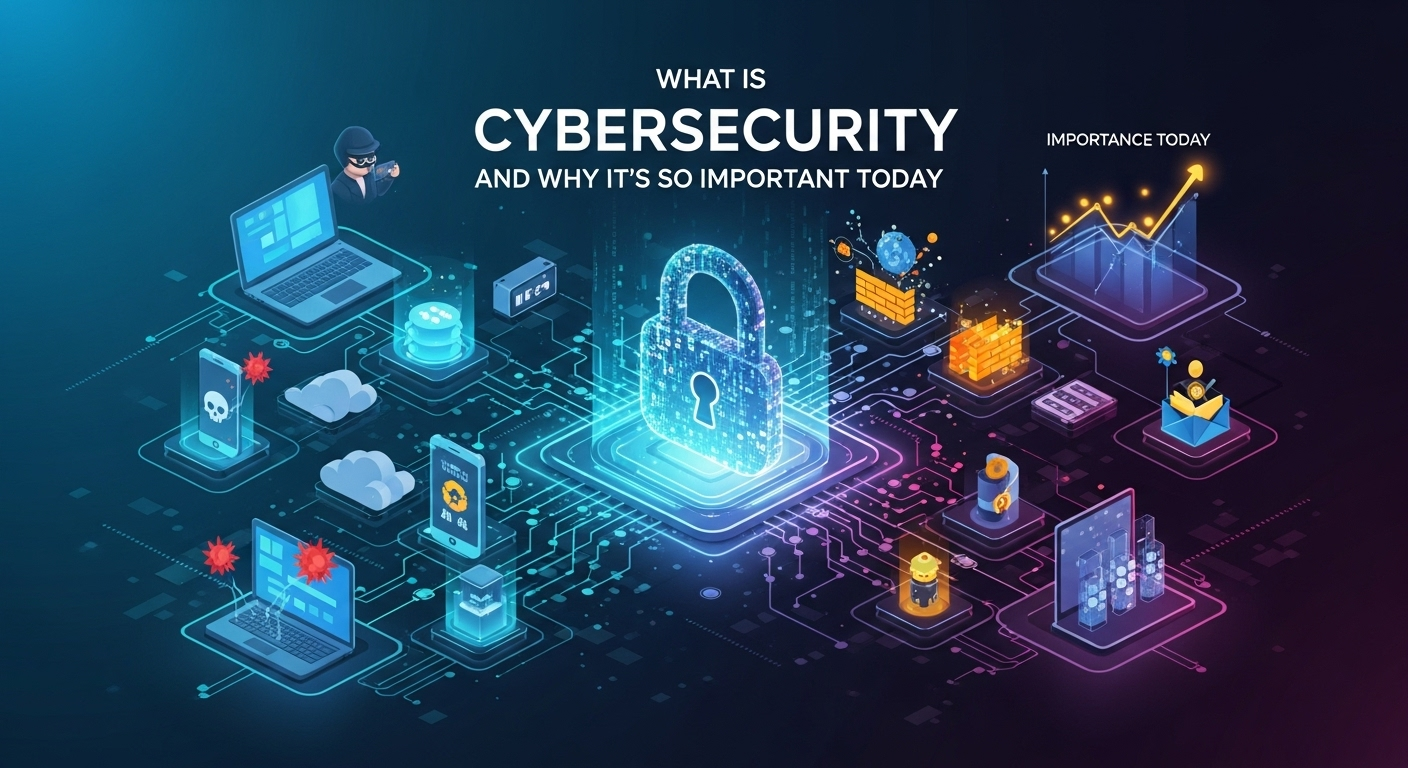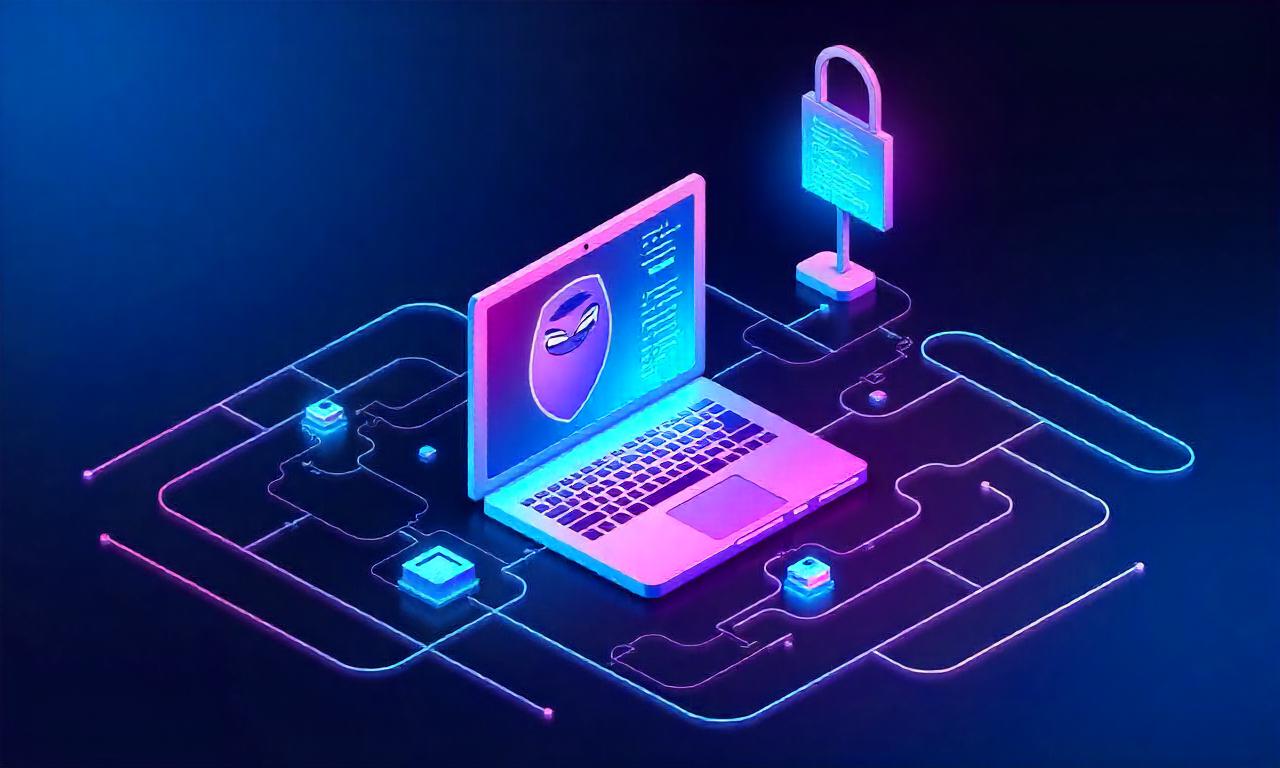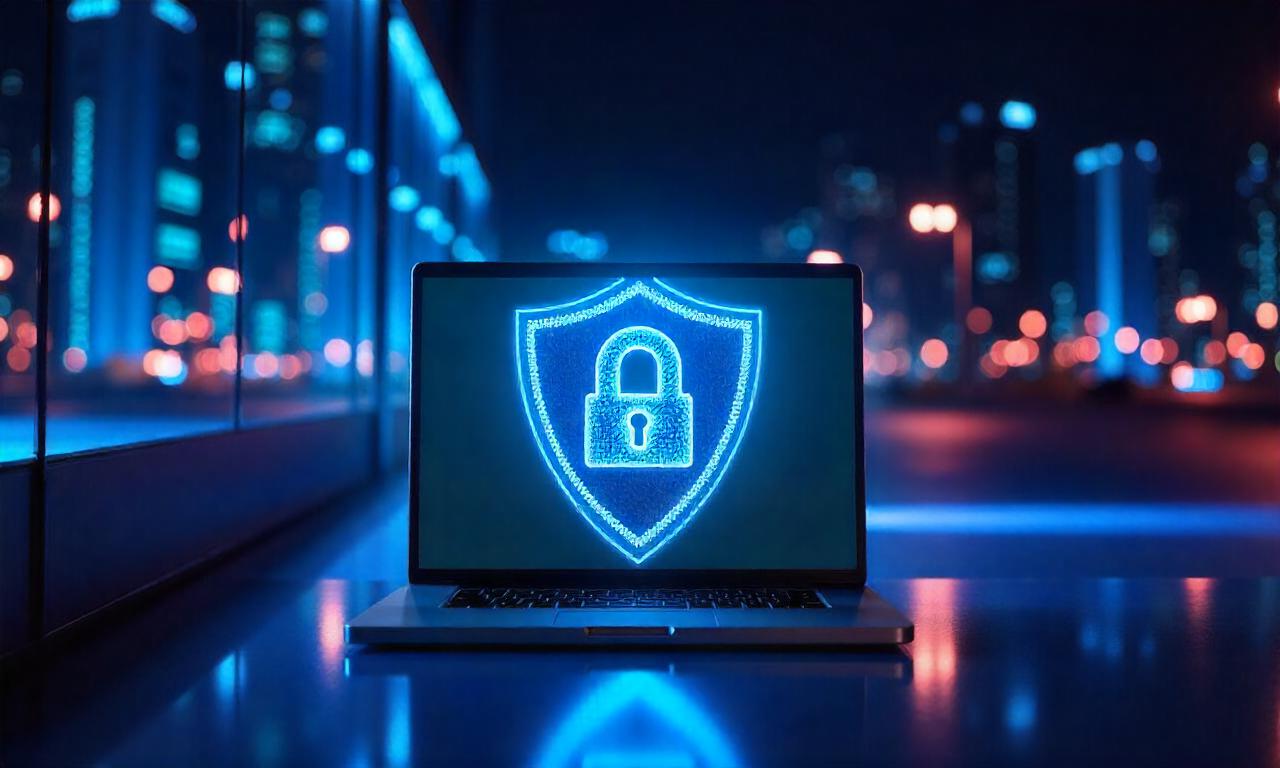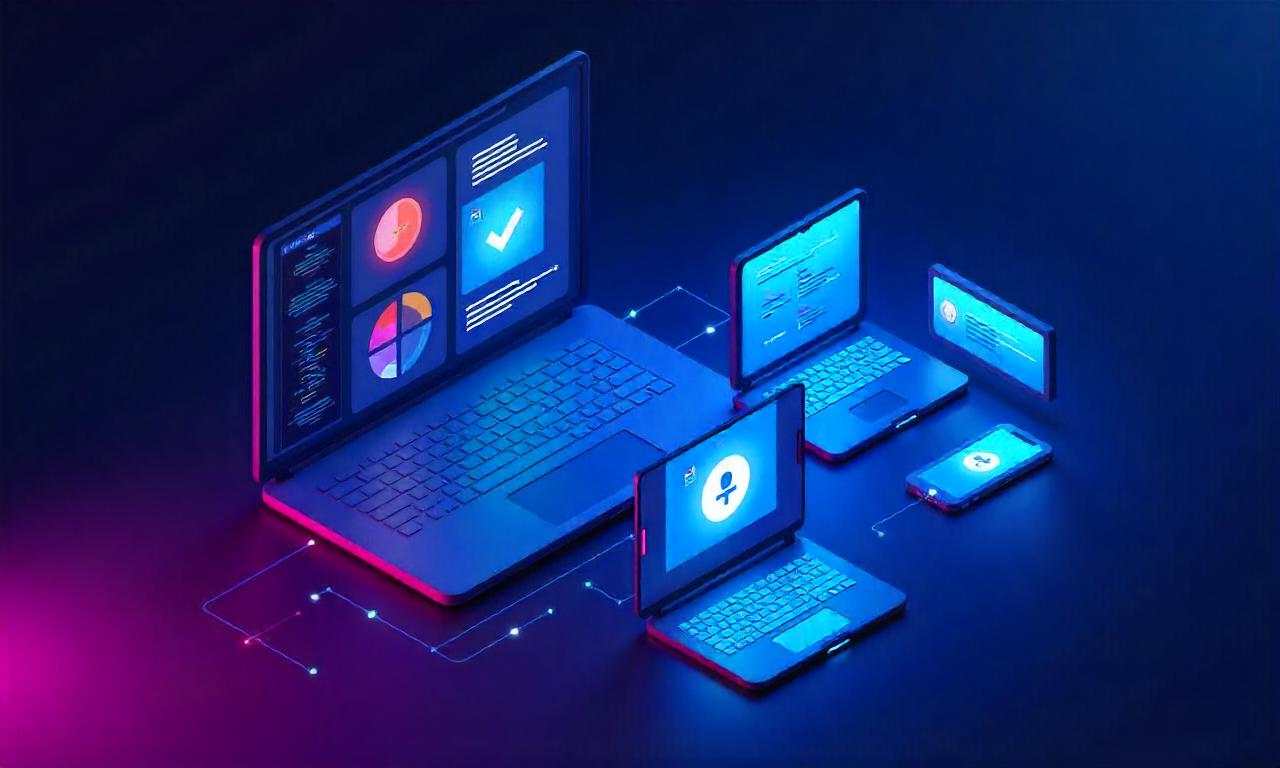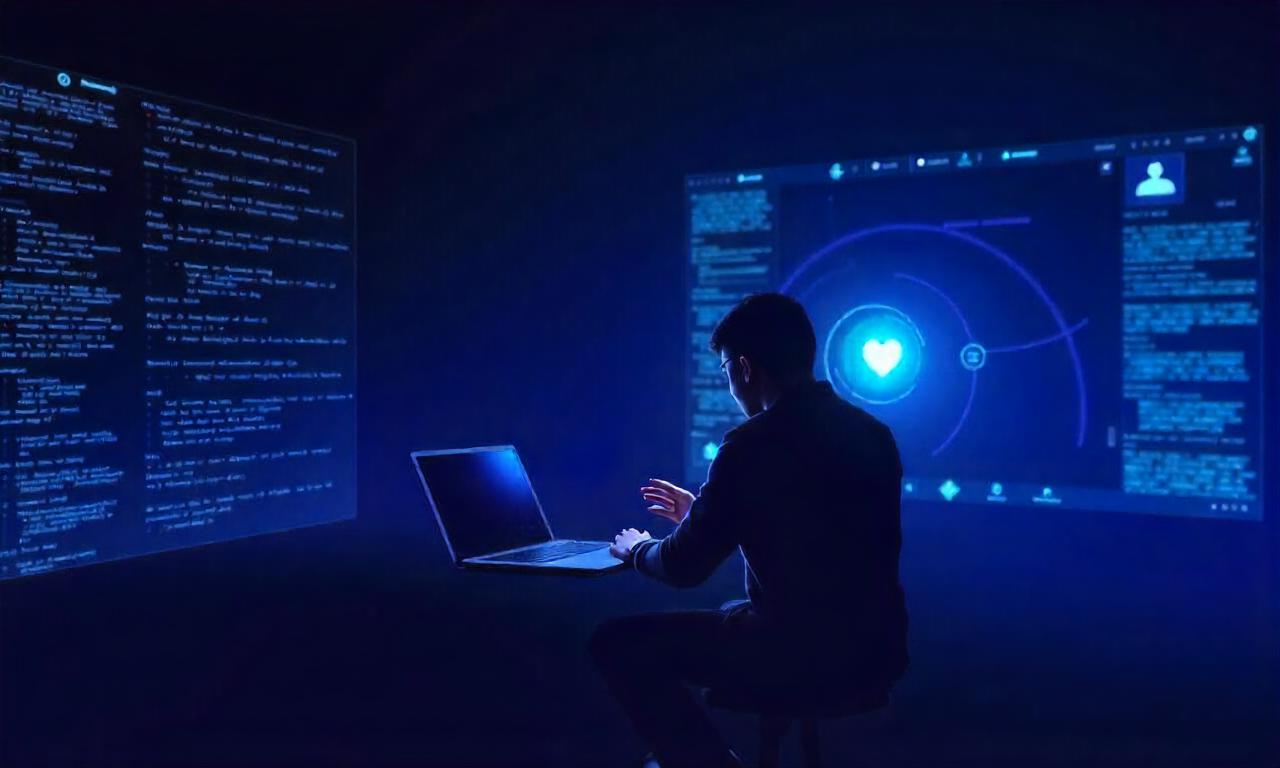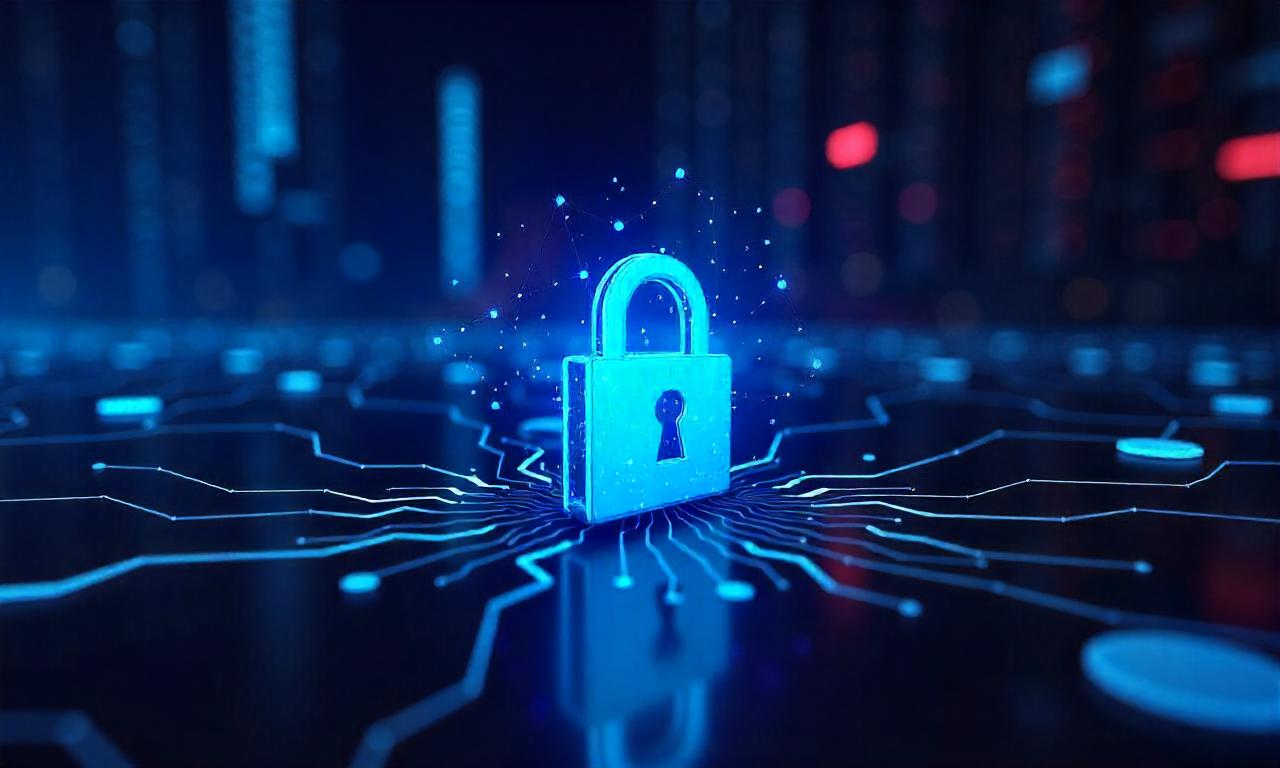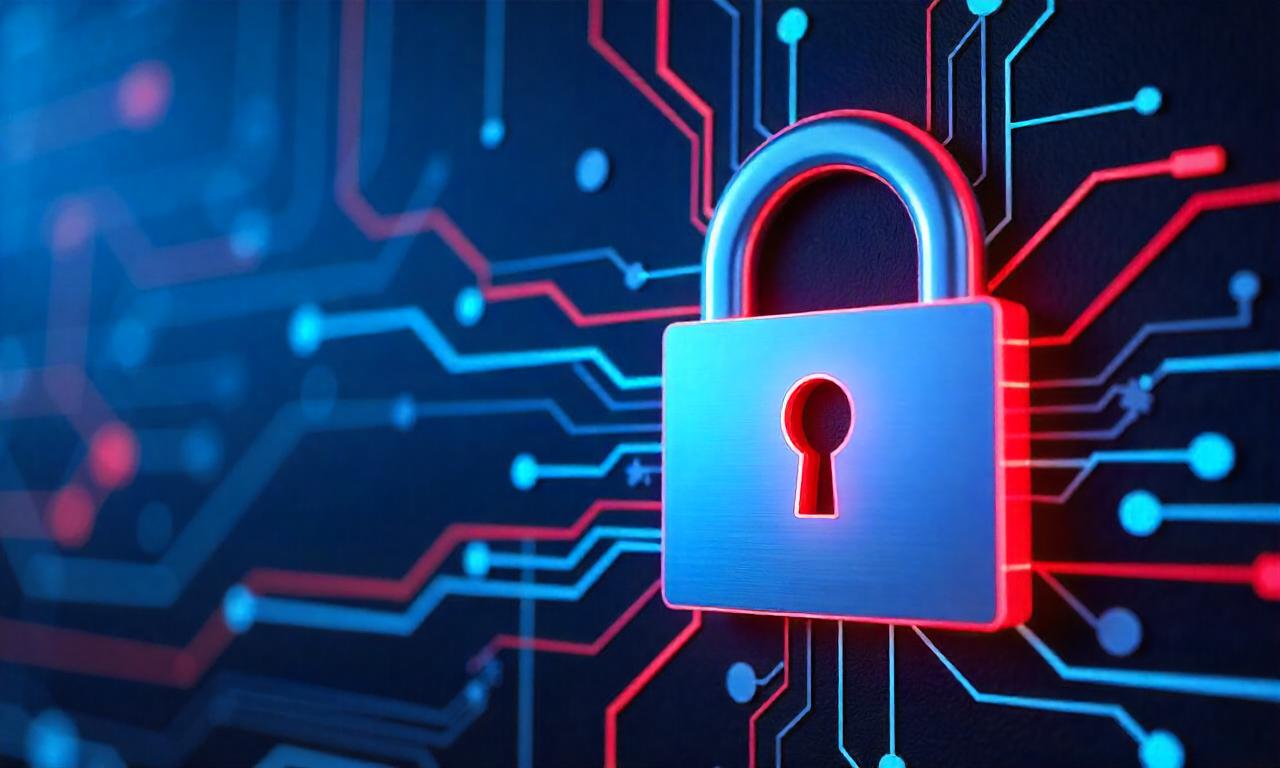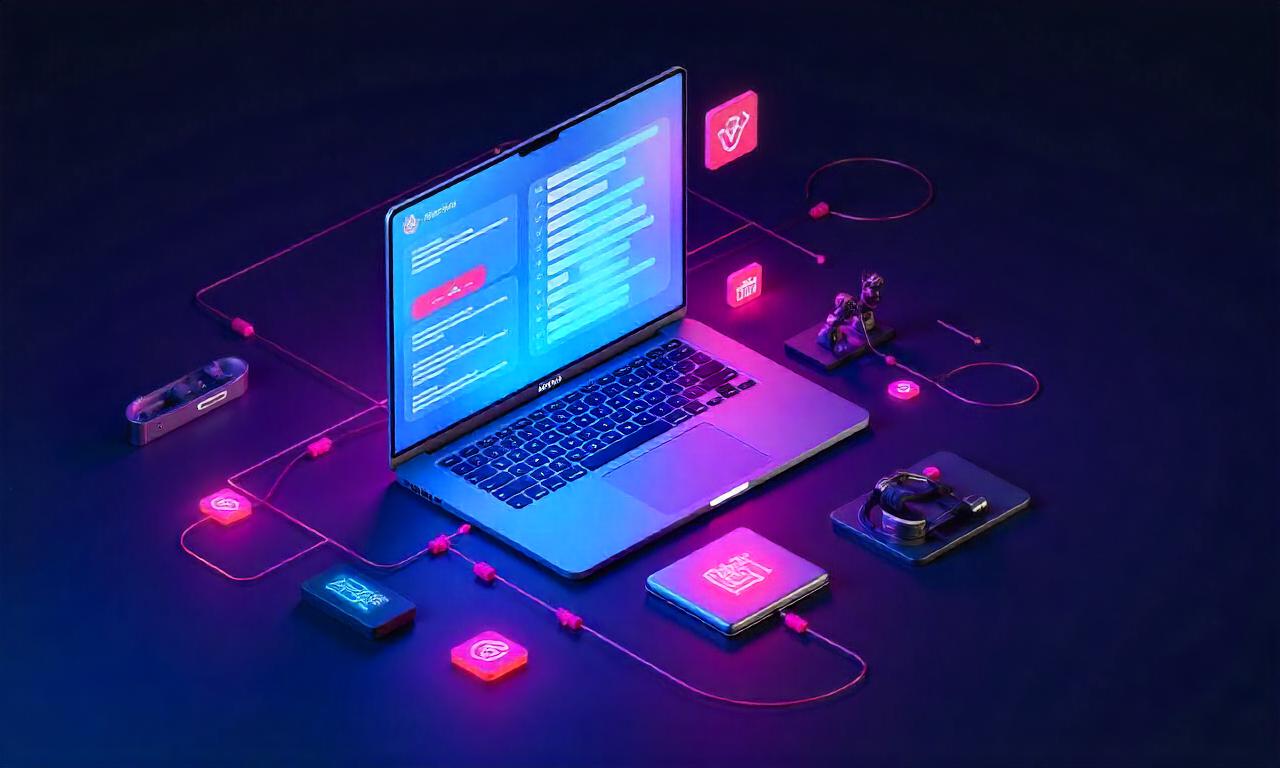In our hyper-connected world, where daily life unfolds across a digital landscape, the concepts of safety and security have taken on a new dimension. From online banking and social media to critical national infrastructure, our reliance on digital systems is absolute. This dependency, however, exposes us to a host of invisible dangers lurking in the virtual shadows. Understanding what is cybersecurity and why is it important is no longer a niche concern for IT professionals; it has become a fundamental aspect of modern literacy, crucial for protecting our data, privacy, and way of life. This guide will explore the multifaceted world of cybersecurity, demystifying its core principles, outlining the prevalent threats, and highlighting the critical role it plays in securing our digital future.
Table of Contents
ToggleDemystifying Cybersecurity: The Core Concepts
At its heart, cybersecurity is the practice of protecting systems, networks, and programs from digital attacks. These cyberattacks are usually aimed at accessing, changing, or destroying sensitive information; extorting money from users via ransomware; or interrupting normal business processes. It's a broad field that encompasses everything from the antivirus software on your personal laptop to the sophisticated defense mechanisms protecting government databases. The ultimate goal is to establish a secure digital environment where data and systems are safe from unauthorized access and malicious intent.
This practice is built upon a foundational principle known as the CIA Triad. This acronym stands for Confidentiality, Integrity, and Availability. Confidentiality ensures that data is accessible only to authorized individuals, preventing sensitive information from falling into the wrong hands. Integrity maintains the consistency, accuracy, and trustworthiness of data over its entire lifecycle, ensuring it is not altered by unauthorized parties. Finally, Availability guarantees that systems, networks, and data are operational and accessible to authorized users when needed. A robust cybersecurity strategy effectively balances these three pillars to create a resilient defense.
While often used interchangeably, it's useful to distinguish between cybersecurity and information security. Information security (InfoSec) is a broader term that pertains to protecting all information assets, whether in digital or physical form (e.g., paper documents). Cybersecurity is a subset of information security that focuses specifically on protecting digital data and systems. In today's digital-first world, the lines have blurred, but the distinction remains important. Cybersecurity is the frontline defense for the vast majority of our most valuable and vulnerable information.
The Ever-Evolving Landscape of Cyber Threats
The importance of cybersecurity is underscored by the relentless and sophisticated nature of the threats it aims to combat. Cybercriminals are constantly innovating, developing new methods to exploit vulnerabilities in systems, networks, and human behavior. These threats are not a distant, abstract problem; they affect individuals, small businesses, multinational corporations, and even governments on a daily basis, causing financial loss, reputational damage, and widespread disruption. Understanding these common threats is the first step toward building an effective defense.
The spectrum of cyber threats is vast and varied, ranging from simple scams to highly coordinated state-sponsored attacks. Some are designed for quick financial gain, while others aim for long-term espionage or sabotage. The perpetrators can be lone-wolf hackers, organized criminal syndicates, politically motivated "hacktivists," or even national intelligence agencies. This diversity in motivation and capability means that no single defensive solution is enough. A layered, defense-in-depth approach is necessary to protect against such a dynamic threat landscape.
Let's delve into some of the most prevalent and damaging types of cyber threats that define the current digital battleground.
Malware: The Malicious Software Family
Malware, short for “malicious software,” is an umbrella term for any intrusive software developed by cybercriminals to steal data or damage computer systems. It is one of the most common cyber threats and comes in many forms. Viruses attach themselves to clean files and spread through a computer system, infecting other files as they go. Trojans disguise themselves as legitimate software to trick users into installing them, creating a backdoor for other malware or malicious actors. Spyware secretly records a user’s online activity, including login credentials and credit card numbers.
Malware can be delivered in a variety of ways, but the most common infection vectors are malicious email attachments, suspicious downloads, and compromised websites. Once a device is infected, the malware can perform a range of harmful actions, from slowing down the computer to stealing personal information or providing a hacker with remote control over the device. This is why having reputable antivirus and anti-malware software is a non-negotiable component of basic cyber hygiene.
Phishing and Social Engineering: The Human Element
Cybersecurity isn’t just about technology; it’s also about people. Social engineering is the art of manipulating people into giving up confidential information. The most common form of social engineering is phishing, where attackers send fraudulent emails that appear to be from reputable sources. These emails are designed to trick recipients into revealing sensitive information, such as passwords and credit card numbers, or to deploy malware onto their machines by clicking a malicious link.
Phishing attacks have become increasingly sophisticated. Spear phishing targets a specific individual or organization, often using personal information to make the scam more convincing. Whaling is a form of spear phishing aimed at senior executives. Attackers leverage the human tendency to trust and act quickly, creating a sense of urgency or fear (e.g., "Your account has been compromised, click here immediately to secure it"). The most effective defense against phishing is user awareness and skepticism.
Ransomware: The Digital Hostage-Taker
Ransomware is a particularly vicious type of malware that has become a multi-billion dollar criminal industry. It works by encrypting a victim’s files, making them completely inaccessible. The attacker then demands a ransom payment, typically in cryptocurrency like Bitcoin, in exchange for the decryption key. There is, however, no guarantee that the attackers will provide the key even after the ransom is paid.
These attacks can be devastating, crippling hospitals, city governments, and businesses of all sizes. For an individual, it can mean the loss of irreplaceable photos and personal documents. For a business, it can mean a complete shutdown of operations, leading to massive financial and reputational damage. The rise of Ransomware-as-a-Service (RaaS) on the dark web has made it even easier for less-skilled criminals to launch these devastating attacks, further increasing their prevalence.
Denial-of-Service (DoS/DDoS) Attacks
A Denial-of-Service (DoS) attack aims to make a machine or network resource unavailable to its intended users by overwhelming it with a flood of internet traffic. The attacker essentially sends more requests than the target system can handle, causing it to slow down or crash entirely. This prevents legitimate users from accessing the service. Think of it as a hundred people trying to cram through a single doorway at once, blocking anyone from getting through.
A Distributed Denial-of-Service (DDoS) attack is an amplified version of a DoS attack. Instead of using one computer, the attacker uses an army of compromised computers, often called a botnet, to launch the attack from multiple sources simultaneously. This makes it much harder to stop, as there is no single source to block. DDoS attacks are often used to take down websites, online services, or entire corporate networks, causing significant financial loss and disruption.
The Pillars of Cybersecurity: Key Domains and Practices
Effective cybersecurity is not a single product but a comprehensive strategy built on several interconnected pillars or domains. Each domain focuses on protecting a specific area of the digital environment. A mature security posture requires a combination of these practices working in concert to create multiple layers of defense. This "defense-in-depth" approach ensures that if one layer fails, others are in place to stop an attack from succeeding.
These pillars cover everything from the physical hardware and networks to the software applications and the cloud environments where data resides. Implementing controls within each of these domains helps an organization manage risk and build resilience against the diverse array of threats it faces. A failure to address any one of these areas can create a significant weak point that attackers are quick to exploit.
Let’s explore some of the most critical pillars that form the foundation of a modern cybersecurity program.
Network Security
Network security is the practice of securing a computer network from intruders, whether targeted attackers or opportunistic malware. It involves protecting the usability, reliability, integrity, and safety of the network and its data. Key technologies in this domain include firewalls, which act as a barrier between a trusted internal network and untrusted external networks (like the internet), controlling an organization’s incoming and outgoing network traffic.
Other crucial components of network security include Intrusion Prevention Systems (IPS), which actively monitor network traffic for malicious activity and can block it automatically. Virtual Private Networks (VPNs) create encrypted connections over a less secure network, providing a secure tunnel for remote workers to access corporate resources. Proper network segmentation, which divides a network into smaller, isolated sub-networks, also helps contain a breach if it occurs, preventing an attacker from moving freely across the entire network.
Cloud Security
As more organizations migrate their data and applications to the cloud (e.g., Amazon Web Services, Microsoft Azure, Google Cloud), securing these environments has become a top priority. Cloud security is a set of policies, controls, and technologies that protect cloud-based systems, data, and infrastructure. A key concept here is the shared responsibility model, where the cloud provider is responsible for the security of the cloud (the infrastructure), while the customer is responsible for security in the cloud (their data, applications, and access management).
Misconfigurations are one of the biggest risks in cloud security. A simple error, like leaving a data storage bucket publicly accessible, can lead to a massive data breach. Therefore, cloud security focuses heavily on proper configuration management, identity and access management (IAM) to control who can access what, and data encryption both at rest (when stored) and in transit (when moving).
Application Security (AppSec)
Application security, or AppSec, focuses on finding and fixing vulnerabilities within software applications. This can be done during the development process (a practice known as DevSecOps) or after an application has been deployed. With applications being a primary target for attackers, ensuring that the code itself is secure is critically important. It’s about building security in, not bolting it on as an afterthought.
Common practices in AppSec include conducting code reviews and using tools for Static Application Security Testing (SAST) and Dynamic Application Security Testing (DAST) to scan for vulnerabilities. A Web Application Firewall (WAF) is another important tool that is deployed in front of web applications to filter and monitor HTTP traffic between a web application and the Internet, protecting against attacks like SQL injection and cross-site scripting (XSS).
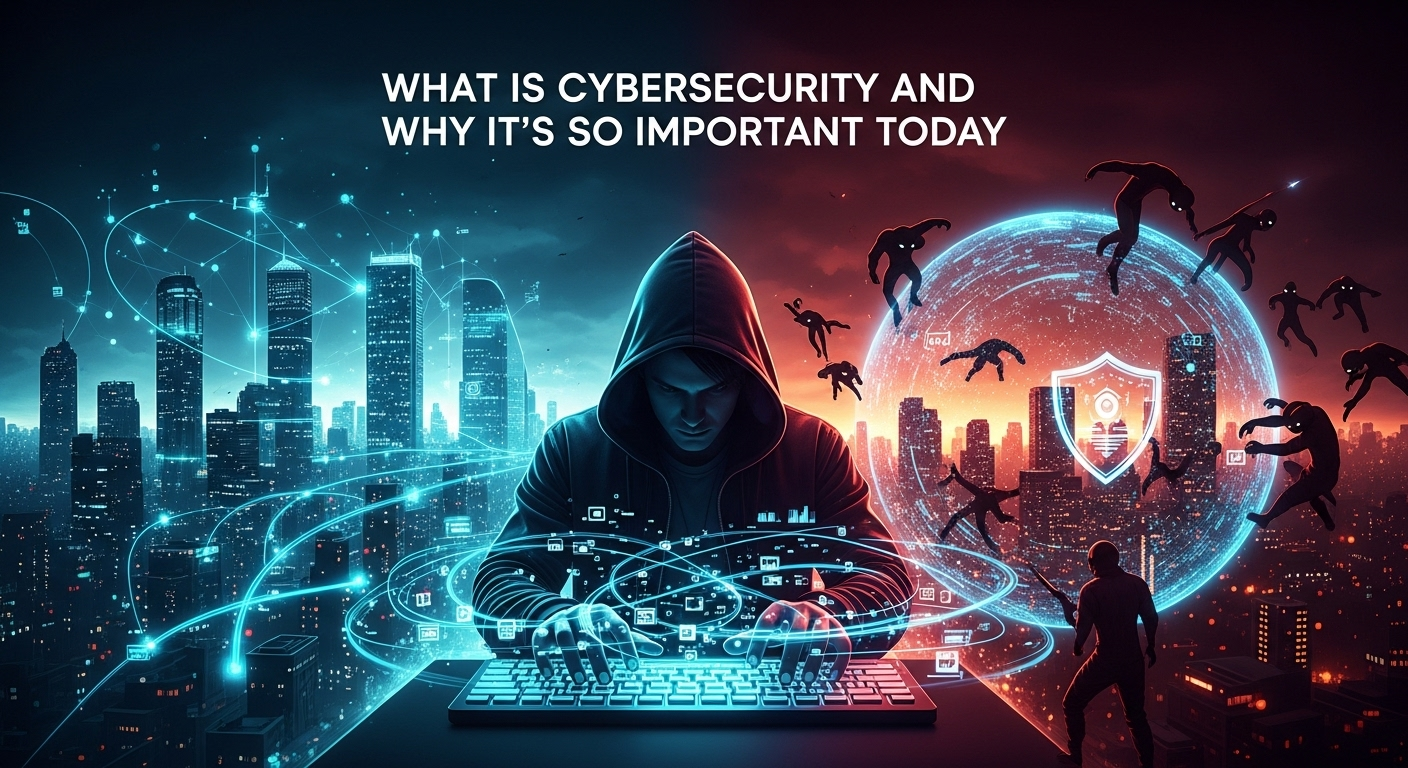
Endpoint Security
Endpoint security is focused on securing the end-user devices that connect to a network, such as laptops, desktops, and mobile phones. These “endpoints” are often the primary entry point for cyber threats. If an employee’s laptop is compromised with malware, it can serve as a beachhead for an attacker to infiltrate the entire corporate network.
Traditional antivirus software is a component of endpoint security, but modern solutions go much further. Endpoint Detection and Response (EDR) tools provide continuous monitoring and threat hunting capabilities, allowing security teams to detect and respond to sophisticated threats that might evade traditional antivirus. Enforcing device encryption, implementing strong password policies, and ensuring all software is kept up-to-date are also fundamental aspects of a strong endpoint security strategy.
Why Cybersecurity Matters: From Individuals to Global Economies
The importance of cybersecurity extends far beyond corporate IT departments. In our digitally integrated society, its impact is felt at every level, from the individual protecting their personal information to governments safeguarding national security. A single, large-scale cyberattack has the potential to cause a ripple effect, disrupting supply chains, financial markets, and essential public services, demonstrating the systemic risk we all face.
For individuals, the stakes are deeply personal. It's about protecting your identity from being stolen, your bank account from being drained, and your private conversations from being exposed. For businesses, a security breach is a multi-faceted crisis involving direct financial costs, regulatory fines, legal liability, and often the most damaging of all—a loss of customer trust that can take years to rebuild.
On a grander scale, cybersecurity is a matter of national and economic stability. Critical infrastructure sectors—such as energy grids, water treatment facilities, transportation systems, and healthcare—are increasingly connected to the internet and are prime targets for state-sponsored attackers. A successful attack on any of these could have catastrophic consequences. The table below illustrates the cascading impact of cyber threats across different scales.
| Level | Examples of Assets at Risk | Potential Impact of a Breach |
|---|---|---|
| Individual | Personal data (SSN, medical records), bank accounts, social media profiles, private photos. | Identity theft, financial fraud, reputational damage, blackmail, personal distress. |
| Business | Customer data, intellectual property, financial records, operational systems, brand reputation. | Financial loss, regulatory fines (e.g., GDPR), lawsuits, operational downtime, loss of competitive advantage, bankruptcy. |
| National | Critical infrastructure (energy, water), defense systems, government databases, economic stability. | Disruption of essential services, economic turmoil, compromise of national security, social unrest, loss of life. |
Building a Strong Defense: Best Practices for Everyone
While the world of cybersecurity can seem complex and intimidating, the good news is that many of the most effective defensive measures are relatively simple. Cybersecurity is a shared responsibility, and by adopting a few fundamental best practices, individuals and organizations alike can significantly reduce their risk of becoming a victim. The strongest technological defenses in the world can be undermined by a single person clicking on a malicious link. Therefore, building a "human firewall" through education and good habits is paramount.
For organizations, this means fostering a security-conscious culture where every employee understands their role in protecting company assets. This involves regular security awareness training, clear policies, and providing the tools and support needed for employees to work securely. It's about making security an enabler of the business, not a barrier.
For individuals, practicing good cyber hygiene is a crucial life skill. Here are some essential best practices that everyone should adopt:
- Use Strong, Unique Passwords: Avoid simple, easy-to-guess passwords. Use a long combination of letters, numbers, and symbols. Most importantly, use a different password for every online account and consider using a password manager to keep track of them securely.
- Enable Multi-Factor Authentication (MFA): MFA adds a second layer of security beyond just your password, such as a code sent to your phone. This is one of the single most effective things you can do to secure your accounts. Even if a hacker steals your password, they won't be able to log in without the second factor.
- Keep Software Updated: Software updates often contain critical security patches that fix vulnerabilities discovered by researchers. Always install updates for your operating system, web browser, and applications as soon as they become available.
- Be Skeptical of Emails, Links, and Attachments: Think before you click. If an email seems suspicious, creates a false sense of urgency, or comes from an unfamiliar sender, it's best to delete it. Never open attachments or click links from sources you don't trust.
- Secure Your Wi-Fi Network: Change the default administrator name and password on your home router. Use a strong encryption protocol like WPA2 or WPA3.
- Back Up Your Data: Regularly back up your important files to an external hard drive or a secure cloud service. This ensures that if you fall victim to a ransomware attack or hardware failure, you can restore your data without paying a ransom.
The Future of Cybersecurity and Emerging Careers
The field of cybersecurity is in a constant state of flux, driven by a perpetual cat-and-mouse game between attackers and defenders. As technology evolves, so do the threats and the methods needed to counter them. Looking ahead, several key trends are set to shape the future of cybersecurity. The proliferation of the Internet of Things (IoT)—billions of internet-connected smart devices from home assistants to industrial sensors—is dramatically expanding the "attack surface," creating countless new potential entry points for hackers.
Artificial Intelligence (AI) and Machine Learning (ML) are also becoming a double-edged sword. Defenders are using AI to analyze vast amounts of data to detect anomalies and predict attacks before they happen. However, attackers are also leveraging AI to create more convincing phishing emails, automate hacking attempts, and develop adaptive malware that can change its behavior to evade detection. The battle for digital supremacy will increasingly be fought between competing AI systems.
This dynamic and critical field offers a wealth of career opportunities for those with the right skills and passion. The demand for cybersecurity professionals far outstrips the supply, leading to high job security and competitive salaries. Roles range from Security Analysts, who monitor networks for threats, and Penetration Testers (or ethical hackers), who are paid to find vulnerabilities, to Security Architects, who design secure systems, and Chief Information Security Officers (CISOs), who lead an organization's entire security strategy. It's a challenging but deeply rewarding career path dedicated to making the digital world a safer place.
—
Frequently Asked Questions (FAQ)
Q1: What is the difference between antivirus software and a firewall?
A: A firewall and antivirus software are both crucial for security, but they serve different functions. A firewall acts as a barrier for your network, monitoring and controlling incoming and outgoing traffic based on a set of security rules. It's like a security guard at the gate. Antivirus software, on the other hand, is designed to detect, prevent, and remove malware that is already on your computer or is attempting to get in. It's like a security patrol inside the building. You need both for comprehensive protection.
Q2: Is cybersecurity a good career path?
A: Absolutely. Cybersecurity is one of the fastest-growing and most in-demand fields globally. Due to the increasing frequency and sophistication of cyberattacks, there is a significant shortage of skilled professionals. This leads to high job security, excellent salary potential, and a wide variety of roles to choose from. It's a challenging, dynamic, and mission-driven career for those who enjoy problem-solving and want to make a real impact.
Q3: How much does a data breach typically cost a company?
A: The cost of a data breach can be immense and varies greatly depending on the size of the company and the scale of the breach. According to IBM's Cost of a Data Breach Report 2023, the global average cost of a data breach reached $4.45 million, an all-time high. This cost includes expenses related to detecting and responding to the breach, lost business due to downtime, regulatory fines, legal fees, and long-term damage to the company's reputation and customer trust.
Q4: Can I learn cybersecurity on my own?
A: Yes, many successful cybersecurity professionals are self-taught. There is a vast amount of free and paid resources available online, including courses on platforms like Coursera and edX, tutorials on YouTube, security blogs, and hands-on "capture the flag" (CTF) challenges. Starting with foundational knowledge in networking (TCP/IP), operating systems (Linux/Windows), and some basic scripting (Python) is a great way to begin. Industry certifications like CompTIA Security+ can also provide a structured learning path and validate your skills.
—
Conclusion
In an era defined by digital transformation, cybersecurity has evolved from a technical back-office function into a strategic imperative for society as a whole. It is the invisible shield that protects our personal privacy, the foundation of trust in our digital economy, and a critical component of national security. The threats are real, persistent, and constantly evolving, but they are not insurmountable. By understanding the core principles of cybersecurity, recognizing the common threats, and committing to a culture of security through best practices, we can collectively build a more resilient and secure digital future. The responsibility does not lie solely with experts; it is a shared duty in which every click, every download, and every password plays a part.
***
Article Summary
This article provides a comprehensive overview of cybersecurity, addressing its definition, importance, and practical applications. It begins by defining cybersecurity as the practice of protecting digital systems and data from attacks, built on the core principles of the CIA Triad: Confidentiality, Integrity, and Availability. The piece then details the modern threat landscape, explaining major threats like malware, phishing, ransomware, and DDoS attacks. It outlines the key "pillars" of a strong defense, including network, cloud, application, and endpoint security. The article stresses the critical importance of cybersecurity for individuals, businesses, and nations, illustrating the severe consequences of breaches. Finally, it offers actionable best practices for everyone—such as using strong passwords and MFA—and looks toward the future of the field, highlighting emerging trends like AI and IoT security, as well as promising career paths in this high-demand industry.

